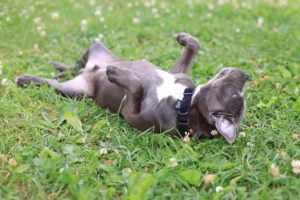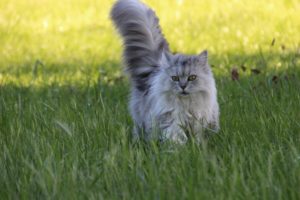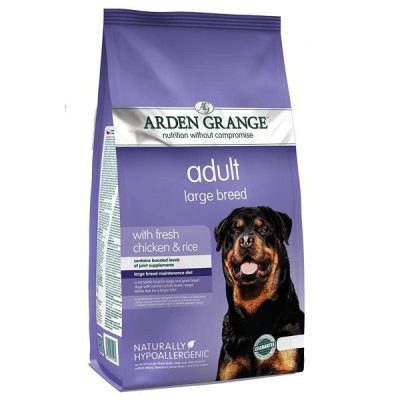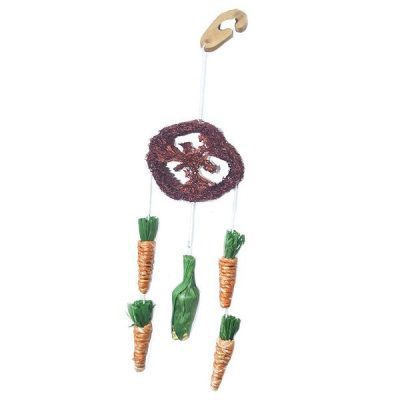Dogs’ and Cats’ Body Language – A Guide
Body language and observing behaviour is the best way for you to tell what your pets are saying, but sometimes it can be tricky to decipher. You might be adopting a dog or cat and want to know what you’re in for! Here’s a guide to what some of the behaviours you might see in your cat or dog usually mean (although you should note that what your unique pet is communicating might not even be covered in our advice)!
Before reading, it’s important to remember that any especially excessive or unusual behaviour means something might be wrong, so treat your pet well and speak to a vet if you’re concerned.
Dogs
Your dog’s tail
A wagging tail is a happy dog, right? Not necessarily! A wagging tail can convey a range of emotions, with the speed suggesting the intensity. Often enough, a wagging, high tail means confident happiness, and you can usually tell when this is the case. Wags and their position can also mean submissiveness, excitement, or negative emotions; if the tail is between the legs, the dog discerns some kind of threat or intimidation.
Digging
When dogs dig, they’re typically trying to do one of three things. They might be tracking an animal under the ground, they might be hiding their things, or they might want a comfortable place to lie (perhaps a cooler spot if it’s warm). Dogs digging is normal, but of course can be bothersome! You could try taking their mind off it with playtime, or learn how to train your pooch.
Panting
Dogs pant simply to cool down and hydrate themselves if they’re too hot. It’s possible that a pups panting conveys pain or stress, if you notice it’s unusual.
Yawning
Unlike humans, dogs sometimes yawn if they’re anxious. This is a good tip to help you notice when your dog’s uncomfortable – it helps them regulate their emotions. Of course, you will probably see a tired yawn or two at nap time, too!
Threatened behaviour
It’s really important to know when dogs are angry or scared to avoid an attack. An aggressive dog may growl, bark, bare their teeth, stare, or try to bite – identify why the dog’s angry (they could be possessive, territorial, frustrated, or frightened) and keep yourself or the aggressor away from them, or try to solve the issue without distressing your dog.
Showing their stomach
Exposing the belly shows playfulness most of the time. You’ll usually notice your pooch rolling over lovingly for you. Curiously, dogs also show their stomach if they feel especially threatened (e.g., during an attack) to demonstrate they mean no harm to opposition. This is another example of some animal body language having two meanings.
Howling
A howling dog is more often than not after attention, or is lonely. If howling or other indicators suggest your dog has separation anxiety (such as destroying objects when you aren’t home), get advice on the matter. Occasionally, howling can occur because of loud noise, like another canine’s distant howls.
Bowing down
If your pup has their chest close to the ground and their wagging tail high in the air, it means playtime if afoot!
Cats
Your cat’s tail
Similar to dogs, an upright tail means an assured cat who feels good (unless the cat is exhibiting other threatened behaviours). A happy tail might quiver, too. A wagging tail, on the other hand, is generally a bad sign, signifying annoyance.
Slow blinking
A cat’s slow blink conveys relaxed affability, friendliness, and loving. It’s suggested that you can return the respect by gently blinking back. If a feline’s eyes are wide and pupils dilated, they’re ready to pounce, or feel fearful.
Threatened behaviour
It’s easy to tell if a cat feels threatened from their body language. If they’re not hiding or trying to appear smaller (as is sometimes the case if the threat is large, like a human), their fur will stand up on end if they’re spooked. They might arch their back in the middle and trot at an angle to make themselves look large to, for example, unfriendly felines. Their ears might also be pulled back if they’re scared, and they may hiss or growl.
Panting
A panting cat feels stressed or anxious in most cases. It could also be because they are especially hot. Once they calm down or cool down, this ought to ebb.
Vocalisations
Meowing is used to garner attention. This could be out of excitement, hunger, frustration, or other feelings. Short trilling is a greeting. Purring is most commonly used to convey happiness. In rare cases, it can be used if the cat is in pain to soothe themselves. Chattering means they’ve spotted prey – usually they can’t attack, which is why you’ll see this when your cat is at the window, watching birds.
We hope these explanations have given you some guidance on a few behaviours that dogs and cats demonstrate, but remember that no body language advice is guaranteed!
For other blogs, click here. To see HugglePets’ range of pet products, click here.
For any questions, queries, or concerns, contact us on Facebook.











